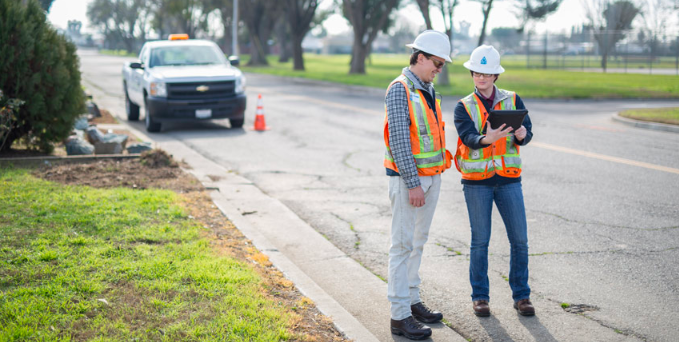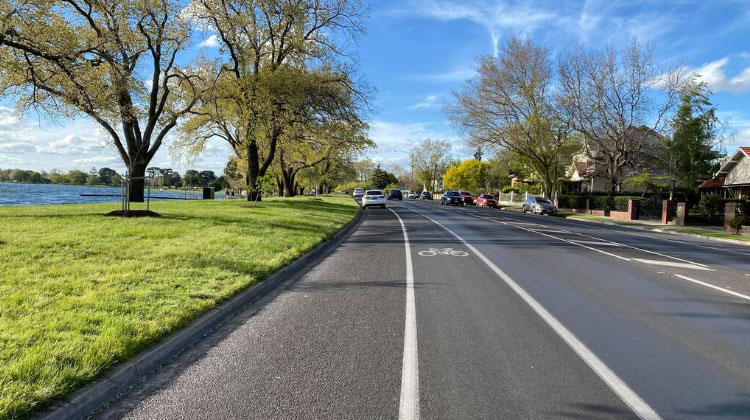
When you think about what makes a development project successful, you might picture architects, builders, and project managers leading the way. But there’s another key player who often works behind the scenes, a traffic engineer. Traffic engineers make sure that developments not only meet all the necessary rules but also improve how smoothly and safely the surrounding roads and pathways function.
In this article, we’ll explore how traffic engineers support a development at every stage, from the early planning to the final delivery, ensuring everything runs according to plan and benefits everyone involved.
Traffic Engineer input during the Feasibility Stage
The feasibility stage is one of the most important parts of any development project. It’s when the foundation is set for everything that follows. During this phase, a traffic engineer steps in to provide key insights that help shape the project’s success. Here’s how they contribute:
Site Access and Orientation
- Choosing the Best Access Points: Traffic engineers figure out the best spots for entry and exit to the site. They look at the surrounding roads, how much traffic there is, and how visible these points are to drivers. The goal is to make sure that these access points are both safe and efficient, without causing traffic jams or safety problems.
- Planning the Site Layout: Traffic engineers also think about how the site is laid out in relation to the existing roads and traffic flow. They work to ensure that vehicles can move smoothly within the site and that the development doesn’t disrupt traffic outside the site.
Car Parking Rates and Layout
- Figuring Out Parking Needs: Traffic engineers calculate how many parking spaces are needed for cars, bikes, and motorcycles based on local rules and the type of development. They make sure that the parking plan is both legal and practical for the people who will use it.
- Designing Efficient Parking: Beyond just meeting the rules, traffic engineers design parking layouts that are easy to use. They plan clear and accessible routes for vehicles and pedestrians, ensuring that traffic flows smoothly in the parking areas.
Traffic Impact Assessments
- Early Traffic Impact Studies: Even in the early stages, traffic engineers can perform preliminary traffic impact studies. These studies help identify potential traffic issues early on, allowing developers to make informed decisions about whether the site is suitable and what adjustments might be needed.
Traffic Engineer input during the Town Planning Stage
After the feasibility stage, a development project moves into the town planning phase. At this point, getting approvals from local authorities becomes crucial. Traffic engineers play a key role in helping to navigate the complex rules and regulations. Here’s how they contribute during this phase:
Town Planning Documentation
- Meeting Local Guidelines: Traffic engineers prepare various documents needed for town planning approvals, such as traffic management plans, car parking designs, and swept path analyses. These documents are carefully prepared to meet local rules, which helps in getting approvals without unnecessary delays.
Traffic Impact Assessments
- Creating Detailed TIAs: Traffic engineers prepare detailed Traffic Impact Assessments, which are needed for town planning applications. These assessments evaluate how much traffic the development will generate and how it will affect the surrounding roads. This information helps secure planning permits by showing that the development won’t create traffic problems.
Car Parking Demand Assessments
- Balancing Demand and Supply: Traffic engineers conduct Car Parking Demand Assessments to ensure that the planned parking spaces are sufficient to meet expected needs. They consider factors like the type of development, the number of expected users, and nearby public transport options to justify the amount of parking provided.
- Swept Path Analysis: This analysis is important for projects with complex vehicle movements, such as loading docks or tight parking areas. Traffic engineers use special software to simulate how vehicles will move within the site, making sure large vehicles can navigate safely without getting stuck or causing issues.
Traffic Engineer amongst Other Stakeholders
- Working Together: Traffic engineers collaborate closely with architects, town planners, and other key players to make sure that traffic considerations are smoothly integrated into the overall development plan. This teamwork helps to spot potential issues early and allows for the creation of solutions that work well for everyone involved.
Traffic Engineer input during the Delivery Phase
As the project moves from planning to construction, the delivery phase becomes the focus. During this stage, a traffic engineer’s role is vital to making sure everything is built safely and according to plan. Here’s how traffic engineers contribute during this phase:
Construction Traffic Management Plans (CTMPs)
- Managing Construction Traffic: During construction, traffic engineers create and implement Construction Traffic Management Plans. These plans explain how construction-related traffic will be managed to minimize disruptions to the surrounding community and ensure safety for both workers and the public.
- Traffic Control Plans: As part of the CTMP, traffic engineers develop Traffic Control Plans. These plans include specific measures like temporary road closures, detours, and signage to keep traffic flowing smoothly around the construction site.
Road Safety Audits (RSAs)
- Ensuring Safety Compliance: Traffic engineers conduct Road Safety Audits before, during, and after construction to make sure the development meets safety standards. They thoroughly examine the site, identify potential hazards, and suggest ways to improve safety for everyone who uses the roads.
- Safe System Assessments: In addition to RSAs, traffic engineers may also perform Safe System Assessments. These assessments aim to reduce the risk of serious accidents by evaluating the safety of the road infrastructure and recommending improvements.
Final Compliance Checks and Certifications
- Traffic Engineer Design Certifications: Once the project is complete, traffic engineers review the car park design to ensure it meets all necessary standards and regulations. They then issue certifications that confirm everything is in compliance, which is often needed for the final project approval.
- Pre-Opening Stage Road Safety Audits: Before the development opens to the public, traffic engineers conduct a final Road Safety Audit. This audit checks that all safety measures are in place and that the development is ready and safe for public use.
- Post-Construction Traffic Assessments: Even after construction is finished, traffic engineers may continue to monitor traffic conditions around the development. They assess whether the actual traffic impact aligns with the predictions made during the planning phase and determine if any additional measures are needed to address unexpected issues.
A traffic engineer plays an important role in the success of a development project, helping guide it through every stage, from planning to completion. Their knowledge in traffic management, safety checks, and following regulations ensures that developments meet all legal requirements while also making the surrounding roads safer, more efficient, and sustainable.
Involving a traffic engineer early in the project can save money, improve the overall outcome, and make the approval process smoother. Whether you’re working on a small residential project or a large commercial one, the advice and services of a traffic engineer are essential for bringing your project to life efficiently and safely.














